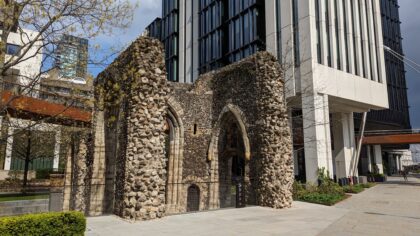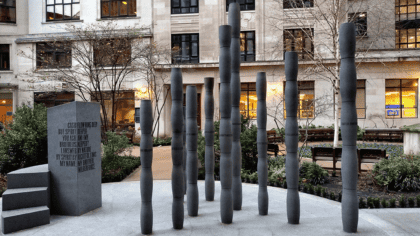As they continue their train journey, Bex and Dan have noticed that there are lots of different types of stations.
Stations are where passengers begin and end their journeys, whether that journey is on a train, tram or tube.
They’re a really important part of the rail network and with over 3,000 of them across Britain, they really do come in all shapes and sizes.
Some are fairly small, and may have just one platform whilst others, often in cities or places where passengers make connections to other parts of the country, have many platforms, connected by footbridges or underpasses.

Sometimes, these stations might even be underground!
Many things you’ll see at stations are there to help your journey. Ticket offices or machines to buy tickets, timetables to help plan journeys, and departure boards and station staff to tell you when trains are leaving and from which platform.
Through speakers, you will also hear messages to keep people up to date and information to keep people safe.
There’s something ALL stations have – platforms! You can’t get on a train without them!
To help passengers get on and off the train, tube or tram, it’s best when platforms are of a certain height – generally the same height as the doors. Really old platforms might vary in height and not suit modern rail vehicles.
In London, deep tube trains are much smaller and lower than overground trains – something that’s very obvious when they share the same platform.

A way of keeping passengers safe is by making sure the gap between the train and the platform is as small as possible. Otherwise people might fall onto the track when getting on or off.
It’s best if platforms are straight so that the staff can see the whole train when preparing to close the doors.
Sometimes, that’s not always possible. Some of London’s underground tube lines were built to follow the route of the roads above, and are sometimes very twisty.
As modern tube carriages are longer compared to their Victorian counterparts, at some stations you might need to ‘mind the gap’.


You should also always stay behind the yellow line on the platform – trains can pass at speed, and you don’t want to get caught in the draft!
As well as passengers, the railways carry freight around the country, taking heavy traffic off the roads, which is good for the environment. Freight trains need their own type of station where goods are loaded from lorries and ships onto trains, from train to train, and from trains onto lorries.
Sometimes you find them near to passenger stations, although larger freight depots might be separate and near to ports or motorway junctions. Today, freight is generally either carried in containers or in special wagons to carry materials such as coal, metals, oil and aggregates!

Find out more about Britain’s railways!
Bex and Dan from Fun Kids learn all about the future of Britain’s railways, from signals to trains and tracks, in this new podcast series!
 Britain’s Digital Railways, in association with the Royal Academy of Engineering
Britain’s Digital Railways, in association with the Royal Academy of Engineering
Add a commentBritain’s Digital Railways
Find out about Britain's railways - from signals and trains to tracks and safety!
More From Britain’s Digital Railways





